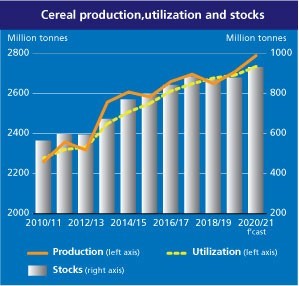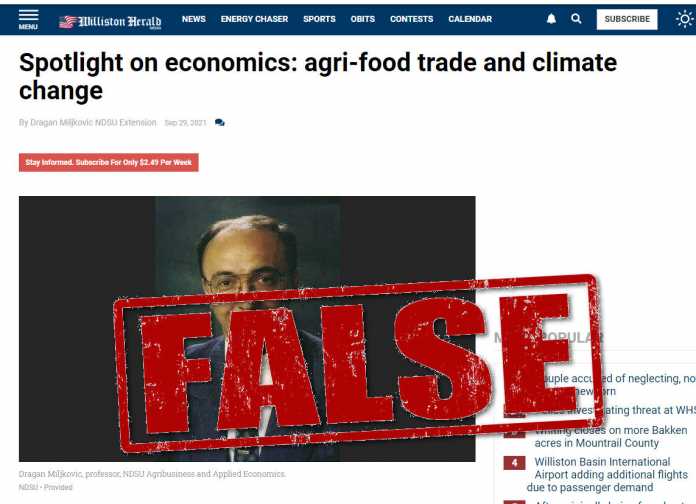The Williston Herald (North Dakota) published a story claiming climate change is both a significant cause of climate change and is being decimated by it. Both claims are false. Data show agriculture does not contribute a substantial share of the greenhouse gas emissions purported by alarmists to be causing climate change. Data also show agriculture is one of the biggest beneficiaries of the increase in carbon dioxide and the Earth’s modest warming.
In a Williston Herald article, titled “Spotlight on economics: agri-food trade and climate change,” its author Dragan Miljkovic, a professor of professor of agricultural economics in the Department of Agribusiness & Applied Economics at North Dakota State University, writes:
Among economic activities, agriculture is one of the most negatively affected by climate change but also a main driver of changes in climate,” says Mijkovic. “Changes in climate and agriculture are tied up together. While the agricultural sector is one of the most hit by changes in climate, it is responsible for great environmental impacts. Agricultural activities (e.g., intensive livestock, fertilization, land use and management) are important contributors of greenhouse gas emissions with related consequences in terms of climate changes.
As presented in Climate at a Glance: Livestock and Methane, data from the U.S. Environmental Protection Agency show that agriculture does not substantially contribute to climate change. Farming’s share of U.S. greenhouse gas emissions, for instance, methane emissions from livestock and carbon dioxide emissions from crop production and farm fuel use, amounts to less than 10 percent of overall U.S. greenhouse gas emissions.
Data from the United Nations Food and Agriculture Organization (FAO) show most crops in most countries have regularly set and reset records for yield and production multiple times during the past 40 years of modest warming. Global yields of the most important cereal crops have increased dramatically over the past few decades, repeatedly setting new records. As shown in the figure below, the FAO’s recent “Cereal Supply and Demand Brief” reports new global records are being set nearly every year for production of the cereal crops (corn, wheat, rice, and similar crop staples) that comprise most of global food consumption.

Previous Climate Realism posts show agricultural productivity has increased dramatically, for example, in Africa, here, here, and here; in the Middle East, here and here; in Latin America, here, here, and here; in Asia, here, here, and here, and in North America, here, here, here, here, and here.
Agronomy and botany explain that crop production is increasing in large part due to the fact that growing conditions, for instance available rainfall and photosynthetic efficiency, have improved as a result of increased atmospheric carbon dioxide, modest warming, and improved precipitation.
Alarming assertions and rhetoric are no substitute for facts when it comes to examining the interrelated topics of climate change and agriculture. Professor Miljkovic and, by extension, the Williston Herald are wrong about the effects of agriculture on climate change and the effects of climate change on agriculture. That’s what the data show.

















FYI Mr. Burnett: The opening line contains a typo (I think). It says, “The Williston Herald (North Dakota) published a story claiming climate change is both a significant cause of climate change and is being decimated by it.” Climate change is causing climate change? Might want to fix that.